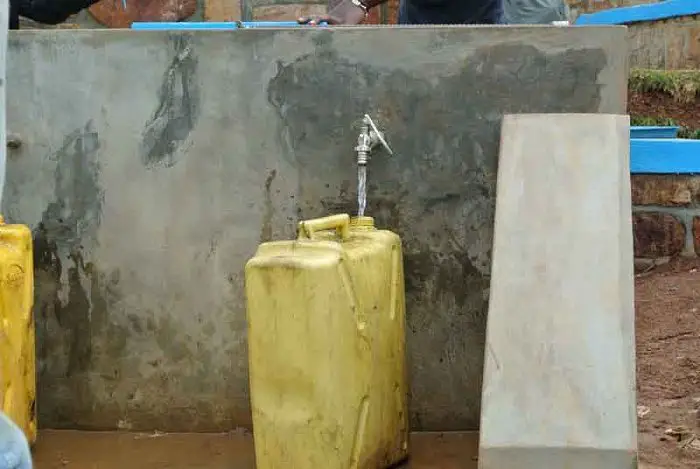Over 4,000 water tanks have been installed in different districts across Rwanda under the Rainwater Harvesting Project with intentions to improve livelihoods and to reduce surface runoff-overflow which causes erosion.
The project concentrated on high rain density areas, with a target to install 10,000 water tanks by December.
The Rainwater Harvesting project which is expected to take three years, is being undertaken by Rwanda Natural Resources Authority (RNRA) since January 2014 in six districts namely Gasabo, Nyarugenge, Musanze, Kicukiro, Nyabihu and Rubavu.
According to the project manager, Innocent Nizeyimana, the project will cost over Rwf2.5 billion with the government subsidy totaling to Rwf952 million.
Among the beneficiaries of the subsidy are Rwandans in the third and fourth Ubudehe Social Stratification, and for one to qualify as a beneficiary he has to own a house.
The project is divided into three components namely; constructing rainwater harvesting systems on selected public institutions, supporting households purchase rainwater tanks through a loan and subsidy system, and households’ settlements, and supporting poor rural households construct artisan tanks by providing them with basic construction materials.
Nizeyimana said construction works for the rainwater harvesting plants in 70 public institutions and five grouped settlements is in advanced stages.
Reacting on why the implementation of the project seemed to move slowly, he said: “It is demand-driven. We sensitise people and they request a tank when they need it. But, you might also sensitise some when it is not their priority,” he said.
“We hope to reach the targeted number of people because we are considering extending the project elsewhere in the country.”
He added that in the Eastern Province, residents had expressed a lot of interest.
“The residents face water shortages in the area but when it rains, rainwater goes to waste, yet, they will need the water the following day,” he said, pointing out that the government’s plan is to ensure that rainwater retention system is availed to all Rwandans.
RNRA started working with GT Bank in July 2015, but later signed a contract with 70 Umurenge Savings and Credit Cooperatives (USACCOs) to facilitate people’s access to ‘tank loans’.
For GT Bank, the loan interest rate was given at 10 per cent while each SACCO has its own interest rate, each at around 10 per cent.
The loan is repaid on a monthly basis over the course of one year.
The Vice Mayor for Social Affairs in Musanze District, Marie Claire Uwamariya, said working with one bank made some people wait for long to get tanks, which was discouraging.
But with Umurenge SACCOs, it was realised that more people had started to embrace the project as the SACCOs are close to people.
About 542 tanks were installed in Musanze District by end July.
“After easing the process of acquiring the tanks, the number of people who have embraced the project has increased,” she noted.
Uwamariya said the district intends to offer free tanks to needy households.
It is obvious that there are some vulnerable people who cannot afford the tank despite the subsidy, he said.
Under the project, Nizeyimana said, 4,000 vulnerable households in the three upcountry districts of Musanze, Nyabihu and Rubavu were each provided with one sheeting and five iron sheets to set up a water retaining structure.

